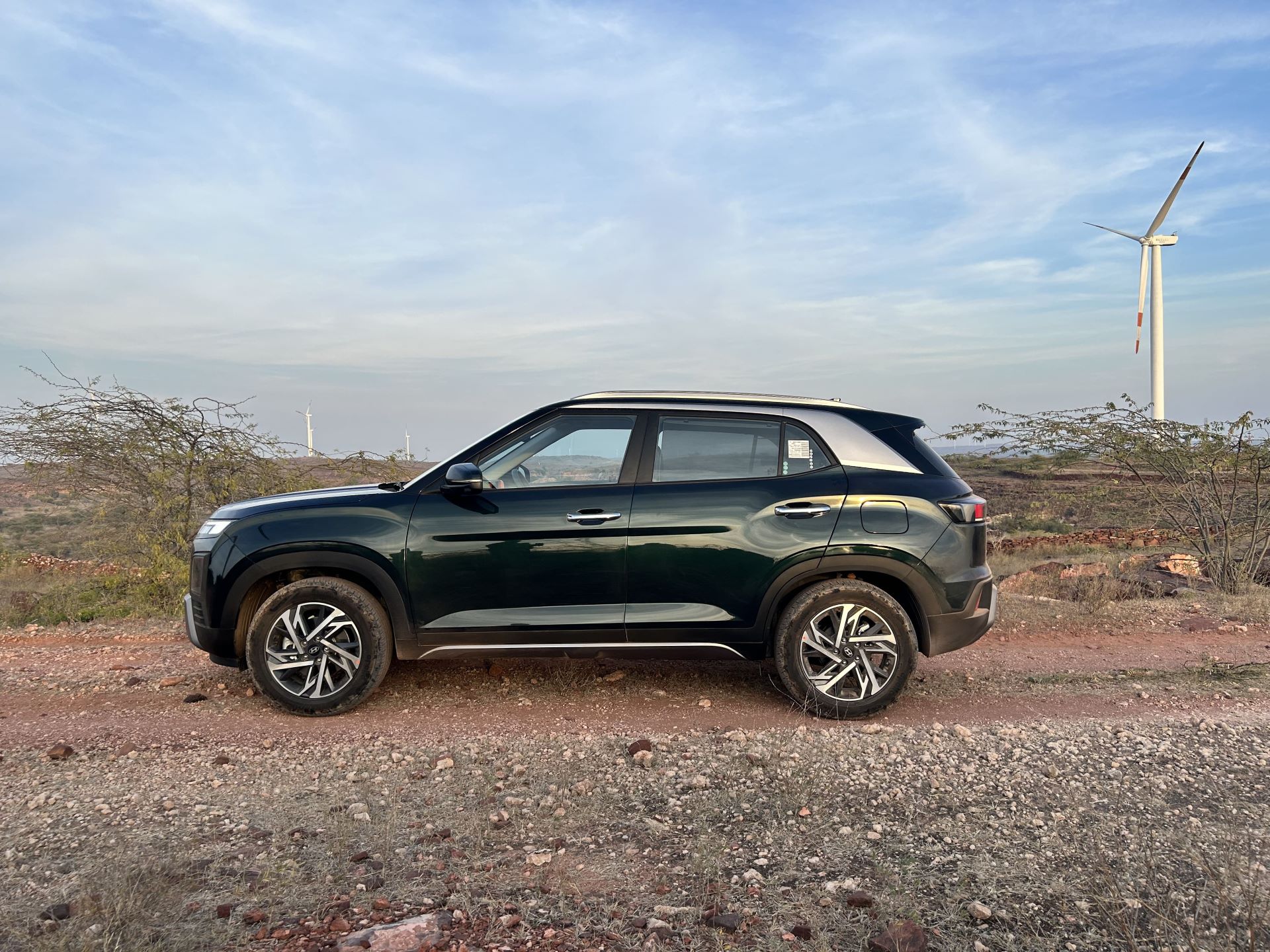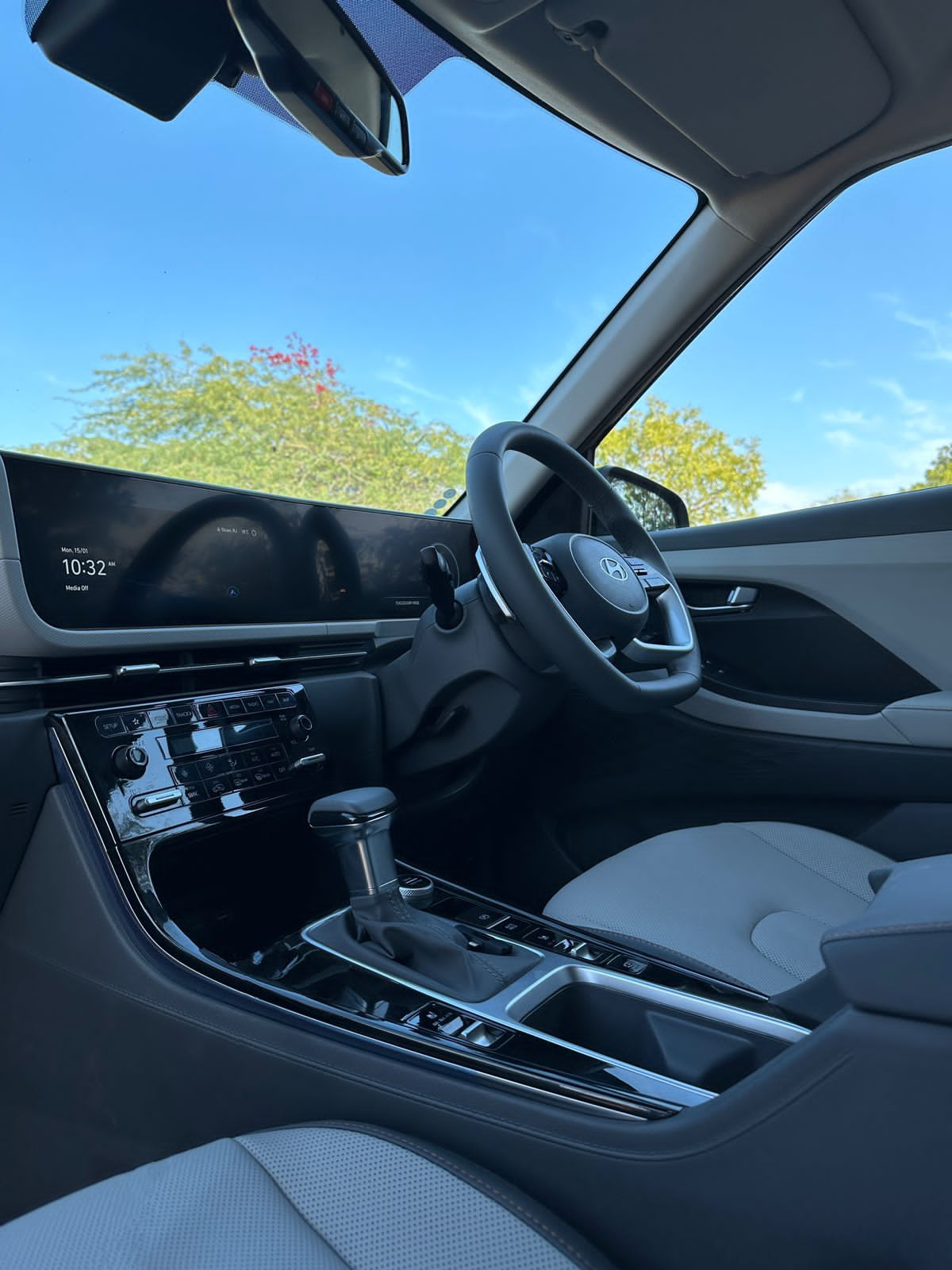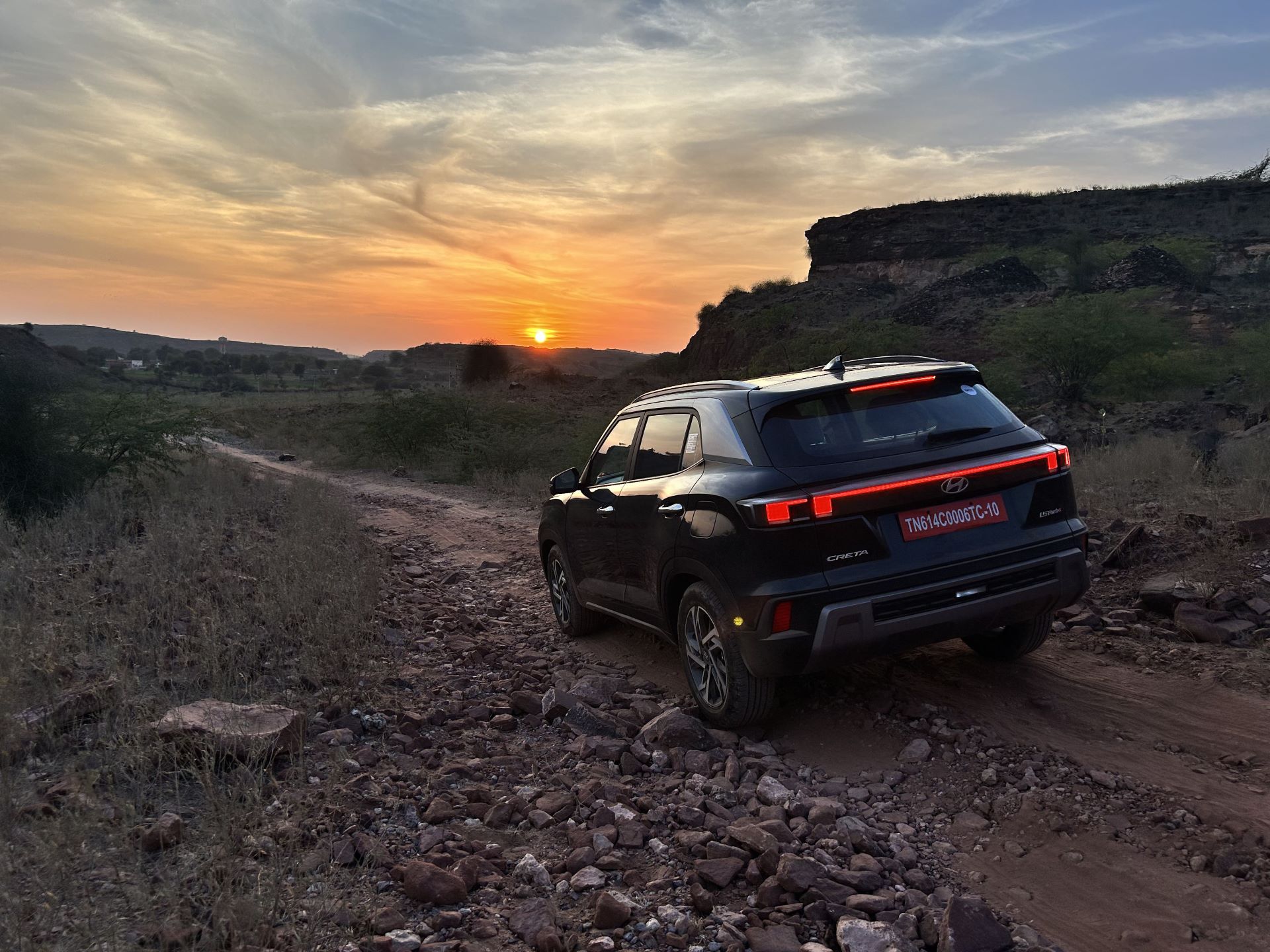The Hyundai Creta is the best-selling mid-size SUV in India. And it was, for a very long time, the de facto SUV in the country, before a glut of rivals entered the segment and made buyers even consider something other than the Creta. With the significant update the 2024 facelift is, Hyundai has addressed some aspects that Creta’s competitors have been doing rather well lately. We spent a day with the Creta in the Osian village, at the edge of the Thar desert and it is safe to say we were a little surprised at how comprehensive the changes were.
Design of the 2024 Hyundai Creta

To begin with, Creta has done away with the bulbous, complicated design that I was never a fan of. In my opinion, the design let the SUV down. Hyundai has revamped the exterior styling of the 2024 Creta to give it a more distinct, modern look. Up front, the Creta adopts Hyundai’s latest blocky, angular design language. This is evident in the straight creases on the hood and the large, prominent grille. Full-width LED headlights with angular elements complete the look. The redesigned bumper also complements the SUV’s squared-off design.
In profile view, changes are less dramatic since the core sheet metal carries over unchanged. What’s evident is that from the sides, the Creta was a good-looking SUV only to be let down by the front and rear. The redesigned front and rear merge seamlessly with the profile of the SUV with new 17-inch alloy wheel designs only adding to it.
At the back, the tailgate, sequential turn signals and full-width lighting mirror the crisp, angular theme of the front end. The large silver skid plate elements on the rear bumper continue the modern, rugged vibe.
Interiors and features of the Creta

Hyundai has made significant changes on the inside as well. The big upgrade is a new curved panel that houses a 10.25-inch touchscreen and a 10.25-inch digital instrument cluster. This slick dual-screen layout aims to give the cabin an airy, modern vibe. As with all new Hyundais, the screens are slick to use, feature high-res graphics and have a ton of features that are neatly integrated. The rest of the interior also gets a style makeover with two-tone gray colors and either fabric or faux leather upholstery depending on trim level. The dash features a lot of interesting touches with new textures, finishes (like the copper surround on the display panel), and even unusual features like a magnetic panel on the right of the steering wheel near the AC vent.
For backseat passengers, the only real change is the addition of two USB-C charging ports. Legroom is still generous and three adults can fit fairly comfortably across the rear bench. The backrest reclines, the headrests have cushy pillows, and there are sunshades on the windows – all nice touches. Cargo space behind the rear seats matches top rivals at 433 liters. But some competitors do offer a bit more usable room for hauling everyday items. On the plus side, the 60/40 folding rear seatbacks let you transport larger pieces when required.
On the features front, highlights include ventilated front seats, dual-zone climate control, air purification, panoramic sunroof, 360-degree camera, and a premium Bose audio system. Connected capabilities enable remote monitoring and in-car music streaming. Wireless Apple CarPlay and Android Auto would be welcome, but overall the Creta delivers segment-leading amenities and tech.
The 2024 Hyundai Creta supposedly prioritizes passenger safety with widespread use of advanced high-strength steel in its body structure. All models come equipped with 6 airbags, ABS, stability control, hill start assist, ISOFIX mounts, tire pressure monitoring, and rear discs. Top trims add Level 2 ADAS features including adaptive cruise, lane-keep assist, forward collision warning, auto emergency braking, rear cross-traffic alert, and blind spot detection. All these active and passive features together put the Creta right at the top of the game.
Powertrain in the Creta
The 2024 Hyundai Creta gains a new 1.5-liter turbocharged petrol engine option that adds an enthusiastic punch. And that was the engine we sampled. Already seen in the Hyundai Verna, Alcazar and Kia Seltos, this engine replaces the older 1.4-liter unit with improved outputs of 158hp and 253Nm torque. Acceleration is noticeably stronger, but speed builds up in a linear, effortless manner. 0-100kmph time should be well under the ten-second mark, and the Creta with the turbo-petrol engine and the DCT gearbox is a quick car. Overall, the new powertrain adds a layer of dynamism previously missing from the Creta. Enthusiasts will appreciate the improved acceleration while ordinary drivers will enjoy the Creta’s quick acceleration in everyday driving.
Ride and handling of the Creta
The 2024 Hyundai Creta maintains its user-friendly nature while gaining maturity in its dynamics. Outward visibility remains excellent thanks to the large glasshouse. Light steering and compact dimensions make the Creta maneuverable in chaotic traffic. The ride quality however has been firmed up a little bit. It now feels a little stiffer while still being sufficiently pliant over our broken roads.
At higher speeds, the SUV feels planted and predictable. It’s not the most engaging in the segment, but it isn’t dynamically flawed either. In fact, I like and appreciate the ride and handling balance of the Creta. Being initially set-up to be softer and more forgiving on our roads as compared to its Kia sibling, the Creta is finally a lot more eager and engaging. Around corners as well, body roll is well controlled and the chassis gives you enough confidence.
Updates to the chassis boost safety via more reinforcement and high-strength steel and this adds to the driving experience as well. The ride feels more sophisticated now, with less floatiness and a composure that was missing before.
The steering still lacks meaningful feedback but it is accurate and makes the Creta easy to place. It does feel very light when not in Sport Mode, but the addition of weight feels very artificial. The addition of rear disc brakes are another positive. We haven’t tested the braking distances yet, but I suspect it will do much better than the pre-facelift Creta. That said, the brakes aren’t very linear in action with the first few millimeters of travel not producing much in the way of stopping power.
Verdict

This is more than a regular facelift. The Creta is well-equipped to take on all the competition in this crowded segment. Most importantly to me, it is easily the best-looking SUV in its segment and that makes a world of difference when it comes to buying decisions. Additionally, it now gets all the kit that its rivals get and more. Hyundai has also focused on the safety front and, like the Verna, the Creta could be on its way to getting a 5-star safety rating as well. All that put together should put the Creta at the very top of the list for anyone looking for a new mid-size SUV. As before, you can choose to get the Creta in a number of trim and variant levels with prices starting at Rs. 11 lakh and going up to Rs. 20.15 lakh (both prices ex-showroom)

